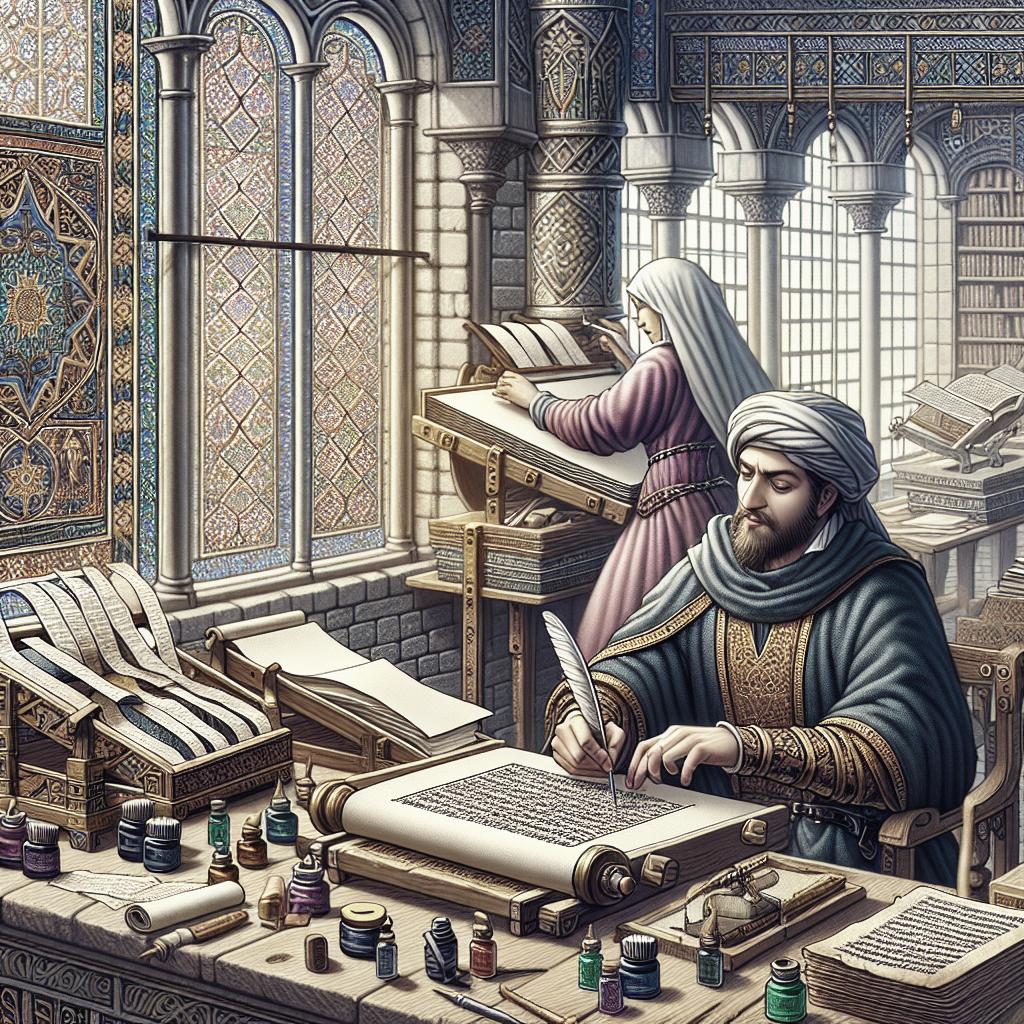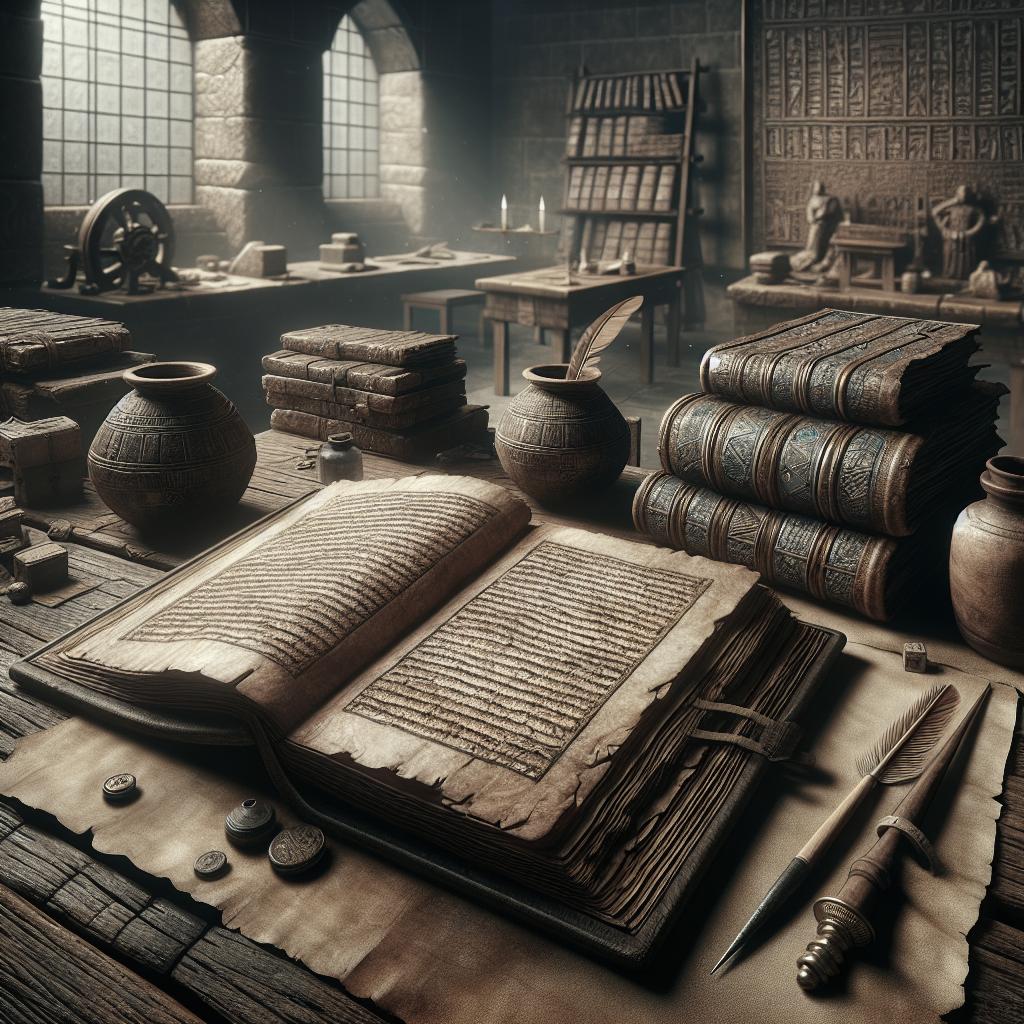<>
Making a codex manuscript is an intricate, historical process that involves a combination of art, craftsmanship, and various materials. This blog post will guide you through the journey of how a codex, an ancient type of book, is made. We will delve into the specific materials used, including papyrus, parchment, and paper, detailing their significance and differences. This exploration will help you appreciate the meticulous efforts that went into the creation of these age-old artifacts. We will also provide a summary for quick reference and additional resources for further learning. —
The Materials Used for Making a Codex Manuscript
Creating a codex involves more than just writing; it requires carefully selected materials that ensure durability and readability. Historically, three primary materials were employed: papyrus, parchment, and paper. Each material had its own set of unique properties and required specific preparation techniques. Preservation was a key consideration, as codices were meant to last for generations. Thus, the choice of material was influenced not only by availability but also by the intended longevity of the text. Let’s delve deeper into these materials and understand why and how they were used in making codices.
1. The Materials for Making a Codex: Three Different Materials were Actually Used
A. Papyrus
Papyrus, derived from the papyrus plant native to the Nile Delta region, was one of the earliest materials used in codex making. The process of creating papyrus sheets involved cutting the plant’s stem into thin strips, which were then laid out in two layers, one horizontal and one vertical. These layers were pressed together and dried, forming a durable writing surface. Papyrus was prized for its smooth surface, making it easier for scribes to write on with reed pens. However, it was susceptible to humidity, and therefore, its use was often limited to more arid regions. Despite these limitations, many important ancient texts, including some of the earliest codices, were crafted from papyrus.
B. Parchment
Parchment, made from animal skins, primarily sheep, goats, and calves, became popular as a more durable alternative to papyrus. The preparation of parchment involved a meticulous process where the skins were cleaned, stretched on frames, and scraped to remove any remaining hair. This was followed by rinsing and treating the skins with lime to produce a taut, smooth surface perfect for writing. Parchment had several advantages over papyrus: it was less fragile, could be produced in larger sizes, and allowed for writing on both sides of a page. This made it an excellent choice for manuscripts that were meant to withstand time and frequent handling, such as religious texts and legal documents.
C. Paper
Paper, introduced into Europe from China through the Islamic world, eventually became the dominant material for codex production. The process of making paper involved pulping plant fibers and spreading the pulp on screens. As the water drained away, the fibers bonded to form sheets of paper. Paper’s affordability and relatively simple manufacturing process led to its widespread use. It was also easily transportable and more versatile than both papyrus and parchment. The advent of paper significantly contributed to the democratization of knowledge, making books more accessible to a broader public.
2. Summary
Crafting a codex involves selecting the right material from options like papyrus, parchment, and paper, each with distinct properties. Papyrus provided a smooth surface but was limited by its fragility. Parchment offered durability and the ability to use both sides of a sheet but required a labor-intensive preparation process. Paper emerged as a cost-effective and versatile choice that became widely used. Understanding these materials and their preparation gives us deeper insight into the artistry and effort involved in creating the ancient codices that have preserved knowledge through the ages.
Resources
– Szirmai, J.A. (1999). The Archaeology of Medieval Bookbinding. Ashgate. – Needham, Joseph (1986). Science and Civilisation in China: Volume 5, Chemistry and Chemical Technology. Cambridge University Press. – Roberts, Colin H. and Skeat, T. C. (1983). The Birth of the Codex. Oxford University Press.
About BiblicalTraining.org
BiblicalTraining.org offers comprehensive biblical education for everyone. Our goal is to equip people with in-depth, accessible theological knowledge through free online courses and lectures from top biblical scholars around the world. Whether you are looking to deepen your understanding of the Bible for personal growth or academic study, BiblicalTraining.org provides the resources to achieve your learning objectives.
| Material | Source | Process | Characteristics |
|---|---|---|---|
| Papyrus | Papyrus Plant | Cutting, Layering, Pressing | Smooth surface, Susceptible to humidity |
| Parchment | Animal Skins | Cleaning, Stretching, Scraping, Treating | Durable, Writable on both sides |
| Paper | Plant Fibers | Pulping, Spreading, Draining | Affordable, Versatile, Easily transportable |


